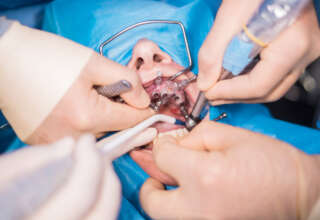
Accidents and emergencies can happen at any time, and having basic first aid knowledge can make a significant difference in saving lives. Whether you’re at home, work, or in public, being equipped with essential first aid techniques is crucial. In this article, we will explore some fundamental first aid skills that everyone should be familiar with.
1. Cardiopulmonary Resuscitation (CPR)
CPR is a life-saving technique that can be administered to someone experiencing cardiac arrest. The American Heart Association recommends starting CPR with 30 chest compressions followed by two rescue breaths. Knowing the proper technique and rhythm is essential for maintaining blood circulation until professional help arrives.
Elevate workplace safety with tailored In-House First Aid Training at Your Workplace. Our expert instructors bring essential skills to your team, ensuring a secure and prepared environment.
2. Choking Relief
Choking can be a frightening experience, but knowing how to respond quickly is crucial. The Heimlich maneuver is a standard technique used to dislodge an object blocking someone’s airway. Stand behind the person, wrap your arms around their waist, and perform quick upward thrusts to expel the obstruction.
3. Basic Wound Care
Being able to clean and dress a wound is a valuable first aid skill. Start by washing your hands thoroughly, then clean the wound with mild soap and water. Apply an antiseptic ointment and cover the wound with a sterile bandage or dressing. Regularly change the dressing to prevent infection.
4. Managing Burns
Burns can occur from various sources, including hot liquids, flames, or chemicals. For minor burns, cool the affected area with running water for at least 10 minutes. Avoid using ice, as it can cause further damage. Cover the burn with a sterile non-stick dressing. Seek medical attention for severe burns or those affecting sensitive areas.
5. Recognizing Stroke Symptoms
Identifying the signs of a stroke and acting quickly is crucial for minimizing long-term damage. Remember the acronym FAST: Face drooping, Arm weakness, Speech difficulty, and Time to call emergency services. If you notice any of these signs, seek medical attention immediately.
6. Treating Sprains and Strains
Injuries like sprains and strains are common and can happen during various activities. The R.I.C.E. method is a standard approach: Rest, Ice, Compression, and Elevation. Allow the injured area to rest, apply ice to reduce swelling, use compression bandages, and elevate the affected limb to minimize pain and swelling.
7. Dealing with Allergic Reactions
Allergic reactions can range from mild to severe, with anaphylaxis being life-threatening. Administer an epinephrine auto-injector (if available) for severe allergic reactions. For milder symptoms, antihistamines can be helpful. Seek immediate medical attention for severe cases.
In conclusion, acquiring basic first aid skills empowers individuals to respond effectively in emergency situations. These essential techniques can make a substantial impact on the outcome of an injury or medical crisis. Consider taking a first aid and CPR course to gain hands-on experience and further enhance your preparedness. Remember, being informed and ready to act can be the key to saving lives in critical situations.














